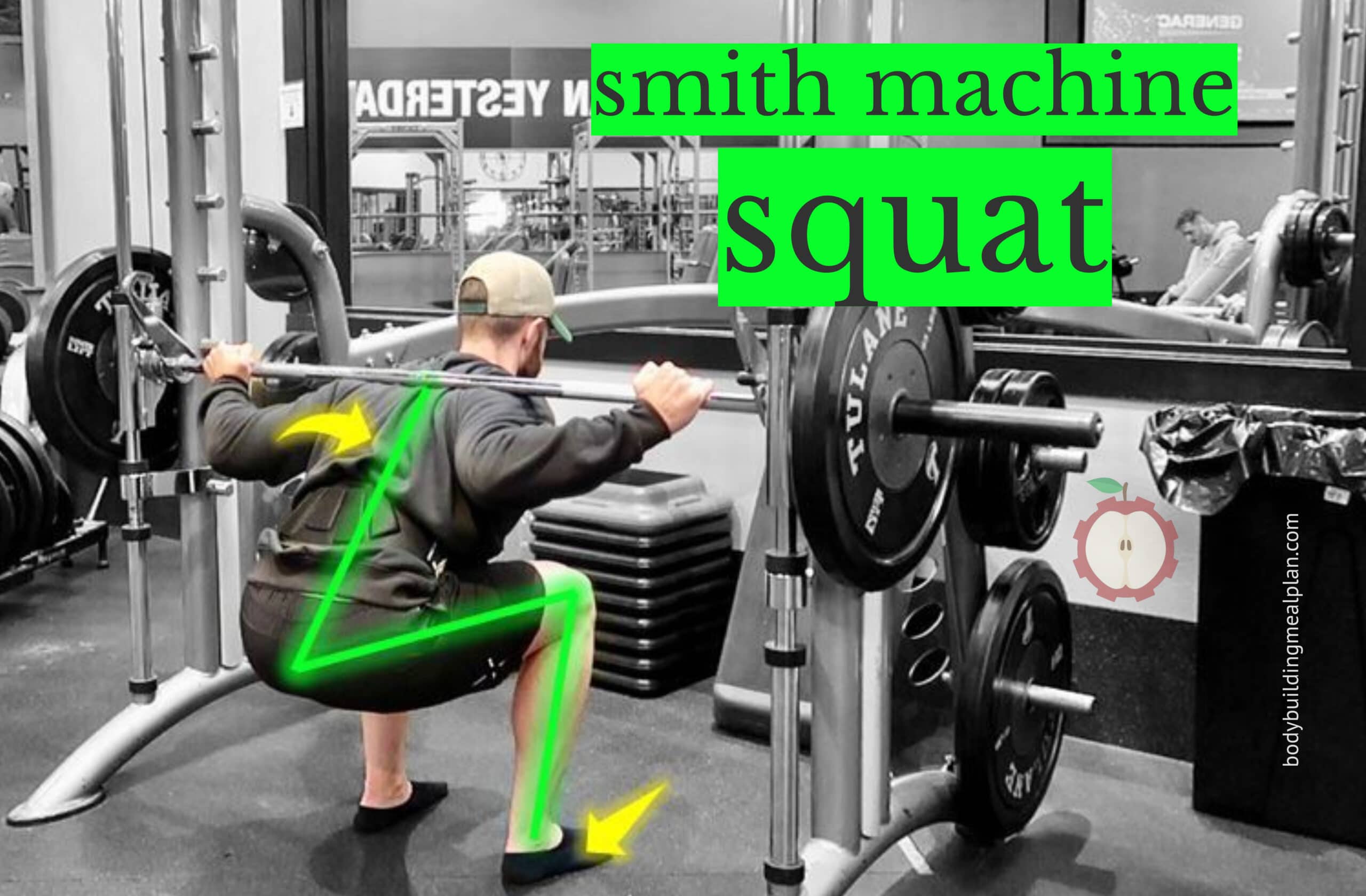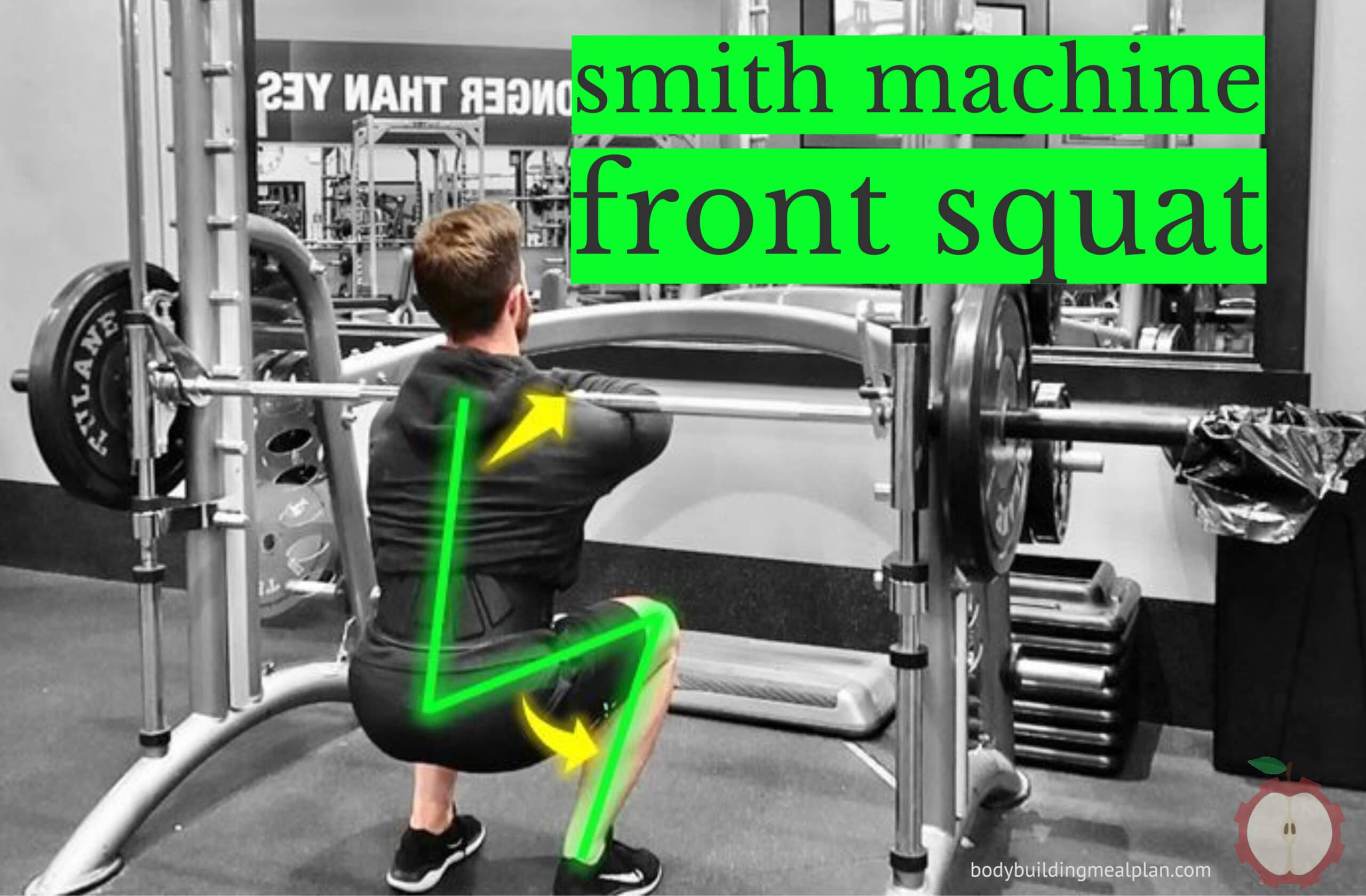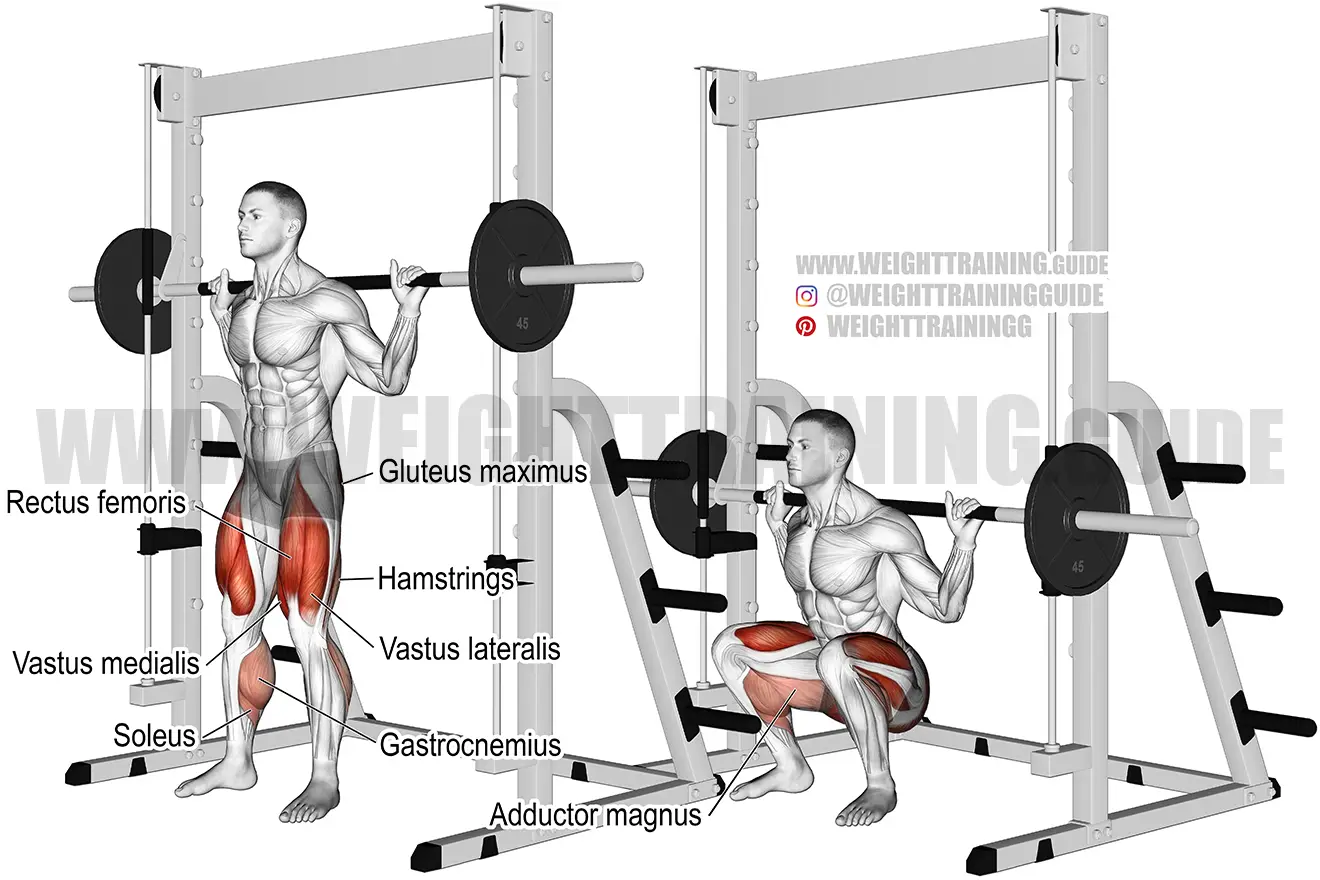The Smith machine squat has long been a staple exercise in fitness routines for both beginners and advanced lifters alike. Whether you're looking to build muscle, enhance strength, or improve overall fitness, understanding how to perform this exercise correctly is crucial for achieving optimal results. In this comprehensive guide, we will delve into everything you need to know about the Smith machine squat, including proper form, its advantages, and various techniques to maximize your workout.
When it comes to resistance training, squats are one of the most effective exercises for targeting multiple muscle groups simultaneously. The Smith machine squat offers a unique variation that provides stability and control, making it an excellent choice for individuals who may struggle with free-weight squats. By mastering the proper technique, you can unlock the full potential of this exercise and achieve your fitness goals more effectively.
In this article, we will explore the ins and outs of the Smith machine squat, offering expert insights, tips, and strategies to help you improve your form, understand its benefits, and experiment with variations to keep your workouts fresh and engaging. Let's dive in!
Read also:Jacqui Heinrich Married
Table of Contents
- Introduction to Smith Machine Squat
- Benefits of Smith Machine Squats
- Proper Form Techniques
- Common Mistakes to Avoid
- Variations of Smith Machine Squat
- Targeted Muscle Groups
- Safety Tips for Smith Machine Users
- How to Progress Your Smith Machine Squat
- Integrating Smith Machine Squats into Workout Routines
- Conclusion and Final Tips
Introduction to Smith Machine Squat
The Smith machine squat is performed using a specialized piece of equipment found in most gyms. This machine consists of a barbell that is fixed within vertical steel rails, allowing it to move only in a vertical plane. This design offers several advantages, including increased stability and reduced risk of injury for those who may not have perfect form when performing free-weight squats.
Why Choose the Smith Machine?
One of the primary reasons people opt for the Smith machine squat is its ability to provide controlled movement. This makes it an ideal choice for beginners who are still learning proper squatting techniques or for individuals recovering from injuries. Additionally, the Smith machine allows for a greater range of motion, enabling lifters to focus on specific muscle groups more effectively.
By understanding the basics of the Smith machine squat, you can begin to incorporate this exercise into your routine and experience the numerous benefits it offers.
Benefits of Smith Machine Squats
Performing squats on the Smith machine offers a wide range of benefits that cater to various fitness goals. Here are some of the key advantages:
- Improved Stability: The fixed barbell design ensures that the weight remains stable throughout the exercise, reducing the risk of injury.
- Enhanced Muscle Activation: The Smith machine squat targets major muscle groups such as the quadriceps, hamstrings, glutes, and core, promoting overall strength and muscle development.
- Increased Range of Motion: Due to the controlled movement, lifters can achieve a deeper squat position, leading to greater muscle engagement and flexibility.
- Customizable Workouts: The machine allows for easy adjustments in weight and positioning, making it suitable for individuals of all fitness levels.
Scientific Evidence Supporting Smith Machine Squats
Research conducted by fitness experts has shown that the Smith machine squat can be just as effective as traditional free-weight squats in terms of muscle activation and strength gains. Studies have also highlighted its role in improving balance and coordination, especially for beginners.
Proper Form Techniques
Mastering the correct form is essential to maximizing the benefits of the Smith machine squat while minimizing the risk of injury. Follow these step-by-step instructions to perform the exercise safely and effectively:
Read also:Tiffany Henyard Age
Step-by-Step Guide
- Position the Barbell: Adjust the barbell to a height that aligns with your shoulders when standing upright.
- Set Your Stance: Stand with your feet shoulder-width apart, ensuring they are positioned directly under the barbell.
- Engage Your Core: Tighten your abdominal muscles and maintain a neutral spine throughout the movement.
- Lower into a Squat: Slowly bend your knees and hips, keeping your back straight and chest up.
- Push Through Your Heels: Return to the starting position by driving through your heels and extending your legs.
Key Tips for Maintaining Proper Form
To ensure you are performing the Smith machine squat correctly, keep the following tips in mind:
- Maintain a consistent tempo during the movement to avoid rushing.
- Keep your feet flat on the ground and avoid lifting your heels.
- Focus on engaging your glutes and hamstrings for maximum muscle activation.
Common Mistakes to Avoid
Even with the stability provided by the Smith machine, improper form can still lead to injuries or diminished results. Here are some common mistakes to watch out for:
- Leaning Forward: Leaning too far forward can strain your lower back and compromise your form.
- Lifting Heels Off the Ground: This can reduce the effectiveness of the exercise and place unnecessary stress on your knees.
- Using Too Much Weight: Lifting more than you can handle can lead to poor form and potential injury.
How to Correct These Mistakes
By focusing on proper alignment, keeping your core engaged, and gradually increasing the weight, you can avoid these common pitfalls and perform the Smith machine squat with confidence.
Variations of Smith Machine Squat
Once you have mastered the basic Smith machine squat, you can explore various variations to add variety to your workouts and target different muscle groups.
Front Squat Variation
By positioning the barbell across your collarbone and shoulders, the front squat variation places greater emphasis on your quadriceps and core muscles. This can be an excellent addition to your routine for those looking to build lower body strength.
Bulgarian Split Squat Variation
This variation involves elevating one foot behind you while performing the squat, targeting your glutes and hamstrings more intensely. It also improves balance and stability, making it a great choice for advanced lifters.
Targeted Muscle Groups
The Smith machine squat engages several key muscle groups, making it a highly effective compound exercise. Here's a breakdown of the primary muscles involved:
- Quadriceps: The front thigh muscles are heavily engaged during the squatting motion.
- Hamstrings: These muscles in the back of your thighs assist in extending your legs.
- Glutes: Your buttock muscles play a crucial role in driving the upward movement.
- Core: Maintaining stability throughout the exercise requires engagement of your abdominal and lower back muscles.
Additional Muscle Activation
Depending on the variation you choose, other muscles such as the calves and lower back may also be activated, further enhancing the overall effectiveness of the exercise.
Safety Tips for Smith Machine Users
While the Smith machine offers several safety advantages, it's still important to follow proper guidelines to prevent injury:
- Always warm up before starting your workout to prepare your muscles and joints.
- Start with lighter weights to ensure you can maintain proper form before increasing the load.
- Use the safety catches provided by the machine to secure the barbell in case you lose control.
Importance of Proper Technique
Adhering to proper technique not only maximizes the benefits of the exercise but also minimizes the risk of injury. Taking the time to learn and practice correct form is essential for long-term success.
How to Progress Your Smith Machine Squat
As you become more comfortable with the Smith machine squat, you can gradually increase the intensity of your workouts to continue making progress. Here are some strategies to help you advance:
- Increase the weight incrementally to challenge your muscles further.
- Experiment with different variations to target specific muscle groups.
- Incorporate explosive movements, such as jump squats, to enhance power and speed.
Tracking Your Progress
Keeping a workout journal to track your progress can be a valuable tool in setting and achieving your fitness goals. Record your weights, reps, and variations to monitor improvements over time.
Integrating Smith Machine Squats into Workout Routines
To fully integrate the Smith machine squat into your workout routine, consider the following tips:
Sample Workout Plan
Here's an example of how you can incorporate the Smith machine squat into a weekly workout plan:
- Day 1: Lower Body Focus – 3 sets of 10-12 reps
- Day 3: Full Body Workout – 4 sets of 8-10 reps
- Day 5: Strength Training – 5 sets of 5 reps
Combining with Other Exercises
Pairing the Smith machine squat with complementary exercises such as lunges, deadlifts, and planks can create a balanced and effective workout regimen.
Conclusion and Final Tips
The Smith machine squat is a versatile and effective exercise that offers numerous benefits for individuals of all fitness levels. By mastering proper form, understanding its advantages, and exploring various techniques, you can optimize your workouts and achieve your desired results.
We encourage you to share your experiences and tips in the comments below. Additionally, consider exploring other articles on our site for more insights into fitness and wellness. Together, let's elevate our fitness journeys and embrace a healthier lifestyle!


